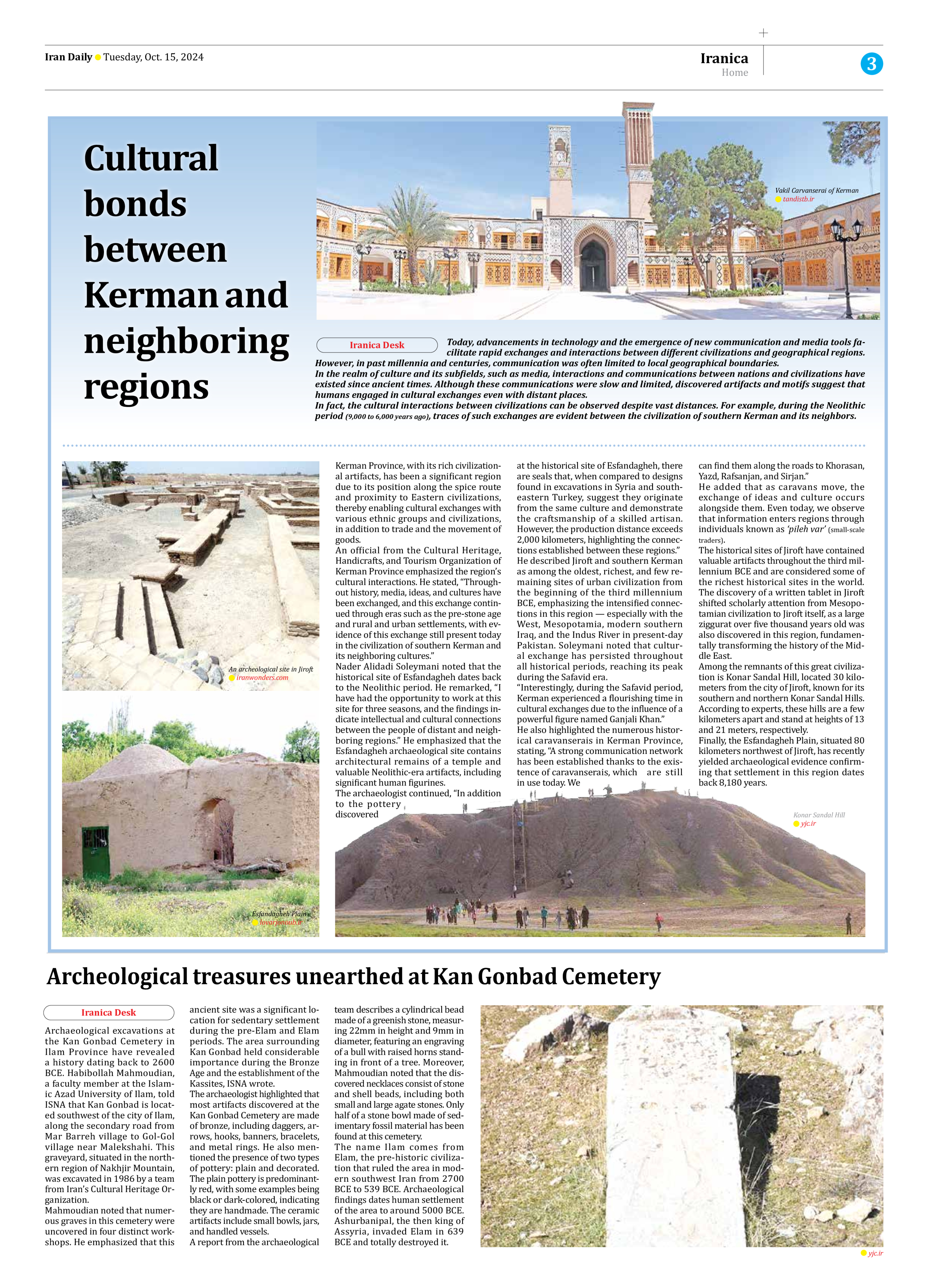
Archeological treasures unearthed at Kan Gonbad Cemetery
Archaeological excavations at the Kan Gonbad Cemetery in Ilam Province have revealed a history dating back to 2600 BCE. Habibollah Mahmoudian, a faculty member at the Islamic Azad University of Ilam, told ISNA that Kan Gonbad is located southwest of the city of Ilam, along the secondary road from Mar Barreh village to Gol-Gol village near Malekshahi. This graveyard, situated in the northern region of Nakhjir Mountain, was excavated in 1986 by a team from Iran’s Cultural Heritage Organization.
Mahmoudian noted that numerous graves in this cemetery were uncovered in four distinct workshops. He emphasized that this ancient site was a significant location for sedentary settlement during the pre-Elam and Elam periods. The area surrounding Kan Gonbad held considerable importance during the Bronze Age and the establishment of the Kassites, ISNA wrote.
The archaeologist highlighted that most artifacts discovered at the Kan Gonbad Cemetery are made of bronze, including daggers, arrows, hooks, banners, bracelets, and metal rings. He also mentioned the presence of two types of pottery: plain and decorated. The plain pottery is predominantly red, with some examples being black or dark-colored, indicating they are handmade. The ceramic artifacts include small bowls, jars, and handled vessels.
A report from the archaeological team describes a cylindrical bead made of a greenish stone, measuring 22mm in height and 9mm in diameter, featuring an engraving of a bull with raised horns standing in front of a tree. Moreover, Mahmoudian noted that the discovered necklaces consist of stone and shell beads, including both small and large agate stones. Only half of a stone bowl made of sedimentary fossil material has been found at this cemetery.
The name Ilam comes from Elam, the pre-historic civilization that ruled the area in modern southwest Iran from 2700 BCE to 539 BCE. Archaeological findings dates human settlement of the area to around 5000 BCE. Ashurbanipal, the then king of Assyria, invaded Elam in 639 BCE and totally destroyed it.







